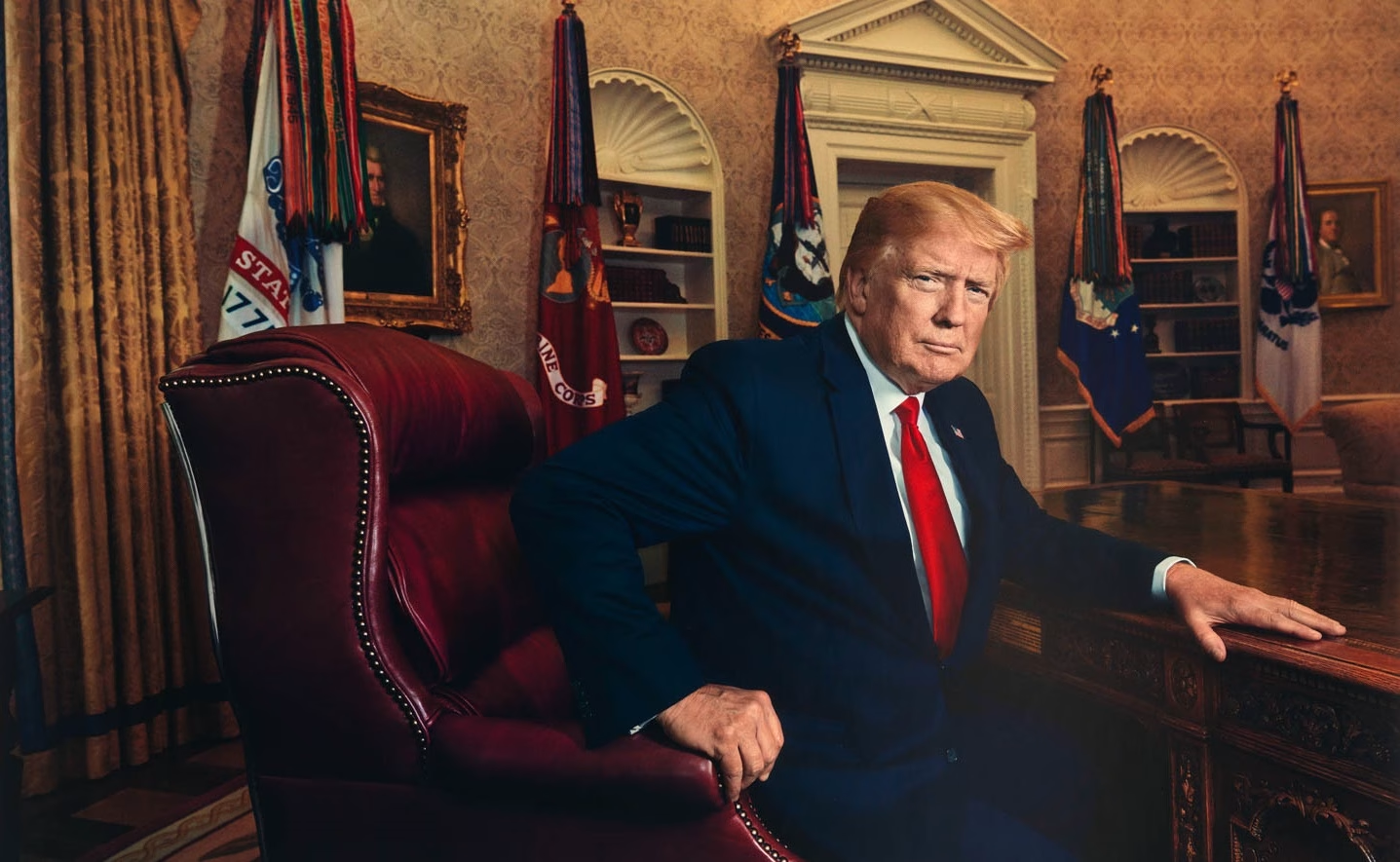
Trump intensifies his activities in all areas, from the economy to foreign policy, in order to gloss over problems
To combat internal crises and strengthen his position, Donald Trump is relying on the large-scale use of security forces within the country. The America First military-police operation has been launched in 19 states, and the energy collapse in democratic regions is being used as a pretext for political pressure and threats to send in troops. This strategy allows the president to consolidate his electorate by demonstrating his determination to restore order in a situation where, in his opinion, traditional institutions are failing.
Intel’s forced bailout
After an active and scandalous start to his term, Donald Trump temporarily fell into a state comparable to hibernation, and it seemed that he had exhausted his potential. But it soon became clear that his electorate would not forgive passivity, and by the end of the summer, the president began to return to his usual rhetoric and decisive actions to maintain his ratings. The White House announced a rescue program for troubled chip giant Intel, which is to undergo a bailout. Despite expert skepticism, the government will purchase 433 million Intel shares at $20 each, giving the state approximately a 10% stake in the company’s capitalization.
In the event of bankruptcy and asset sales, the government will have the final say on the fate of the chip factories. It is precisely these production facilities that Trump’s team is fighting for, as Intel remains the last American corporation capable of producing chips independently, while the more successful NVIDIA and AMD place their orders in Asia.

The president’s entourage considers the deal profitable, citing the fact that a few years ago Intel shares were two to three times more expensive, and now the government has the opportunity not only to support a strategically important manufacturer, but also to potentially earn money if investors support the gradual nationalization of the chip industry. However, many in Congress, including some Republicans, criticize the move, recalling the unpopular measures to bail out Wall Street banks in 2008.
The situation is exacerbated by Intel’s dire straits: the company lost nearly $4 billion in 2025, announced a quarter of its workforce would be laid off and two-thirds of its assets worldwide would be sold off, and the opening of new factories in the US has been postponed until the 2030s. It is possible that the government will ultimately be forced to take complete control of Intel’s factories due to the incompetence of its management, which is on the verge of collapse. However, this outcome is not entirely negative for Trump, who is promoting the idea of a strong state ready to directly manage the economy and take tough action against inefficient big business in order to achieve a “golden age” for America.
Trumpism diplomacy in India
Trump is stepping up efforts to expand the “anti-China front”, seeking to bring India back into the fold after relations soured over Russian oil supplies. As part of this strategy, the White House has appointed a new US ambassador to India, Sergio Gor, who previously headed the Trump administration’s personnel department and has also been given the status of special envoy to the president on Central and South Asia.
Gor is a longtime Trump loyalist: he participated in fundraising during the 2020 campaign and was involved in recruiting personnel for election headquarters. His lack of diplomatic experience is in line with the general trend of appointing political allies to key posts instead of career diplomats, whom Trump considers part of a hostile “deep state”. In recent months, Gor has been in conflict with Elon Musk, criticizing his appointees and helping to remove the billionaire from influence in the White House. Now Gor himself is being “exiled” to India amid the ongoing struggle between factions in Trump’s inner circle, where Musk’s influence has not been completely eliminated.
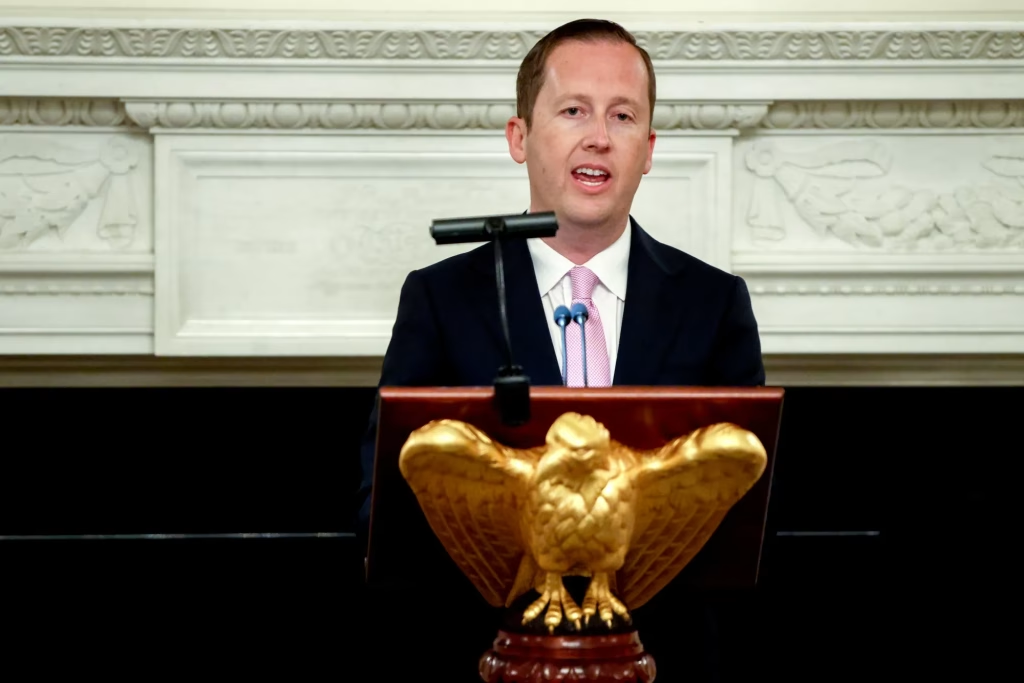
Photo by Bloomberg.com
This appointment continues the established tradition of sending individuals with ambiguous reputations to India. The previous ambassador, Eric Garcetti, appointed by Biden, was transferred to New Delhi after corruption scandals in Los Angeles, where he served as mayor. Gor will find himself at the center of complex negotiations between the US and India. The rapprochement between New Delhi and Beijing threatens the US strategy of containing China, while trade tariffs against India create additional challenges for the US economy. Resolving these contradictions will be particularly difficult amid uncertainty in the State Department and mass purges of the diplomatic corps. If successful, Gor will be able to implement Trump’s ambitious plans and strengthen his position in the administration.
Order by force and its price
The main priority for the US president remains domestic policy and confrontation with the Democrats, whom he accuses of deliberately exacerbating chaos in the country in order to promote a “progressive” ideology. In this context, Trump’s large-scale military-police doctrine is being implemented through the America First strategy, under which the Pentagon is sending troops to 19 US states. National Guard forces are being deployed for deportation raids, the detention of illegal immigrants, and the fight against crime.
Virtually all Republican states are ready to join the operation, while Democratic authorities are sabotaging the White House’s policy. However, Washington’s experience has shown the effectiveness of the forced use of troops: after their deployment, the level of violent crime in the capital fell by 40%, which was welcomed by part of the electorate.
Trump’s plans have been met with sharp opposition from Illinois authorities, including radical left-wing Mayor Brandon Johnson and Governor J.B. Pritzker, whose motives are more pragmatic than ideological. Billionaire Pritzker, a member of an influential clan, has presidential ambitions himself, and his sister Penny served as special envoy to Ukraine under the Biden administration. Thus, the operation also has political goals: Trump gets the opportunity to demonstrate the Democrats’ incompetence against the backdrop of their resistance by bringing order to liberal states. The president’s actions have already led to a rise in confidence in the federal government to 33%, and although most Americans remain skeptical of Washington, the ratings of local Democrats are significantly lower than those of Trump’s supporters.
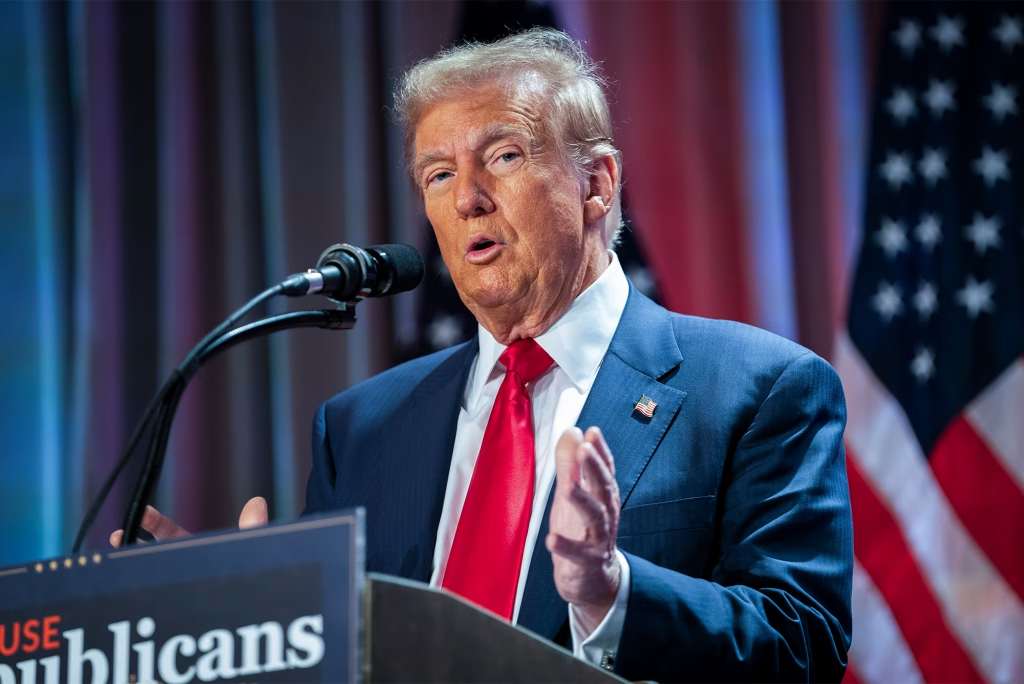
Continuing its confrontation with Democratic states, the White House has moved on from California and Illinois to Maryland, located in close proximity to the capital. Democratic Governor Wes Moore, who has presidential ambitions, is trying to strengthen his position by criticizing Trump, but the state is plunging into a deep crisis. The energy situation in Maryland has reached a critical point: electricity prices have skyrocketed from $28 to $330 per megawatt-hour in just two years. This was caused by the closure of coal-fired power plants and unsuccessful investments in wind energy, coinciding with a boom in the construction of data centers for AI technologies. Worn-out power grids, with an average age of over 70 years, cannot withstand the load, creating the threat of rolling blackouts across the northeastern United States.
The Trump administration is using this crisis for political gain, threatening to send troops to Baltimore and cut off federal funding for the reconstruction of a collapsed bridge. With a budget deficit of $3 billion, the state will not be able to complete the construction on its own until 2028. The White House’s strategy follows the principle of “the worse, the better”, allowing it to undermine the Democrats’ reputation amid the deteriorating situation.
On the economic front, Trump’s tariff policy has led to unforeseen consequences. Postal services in the UK, France, Germany, and other countries have temporarily suspended deliveries to the US due to administrative difficulties caused by the cancellation of the $800 duty-free threshold. This has triggered a rise in consumer goods prices: coffee has risen 25% in a quarter, and the cost of European products, from Italian wines to French cheeses, has increased significantly. Although the White House promises that tariffs will stimulate local production and replenish the budget, the population has already faced an increase in annual expenses of $2000-3000. With the congressional elections approaching, the administration has to balance strategic economic goals with electoral risks, which could lead to adjustments to unpopular measures at the expense of long-term plans.
The path to control of the Federal Reserve
Trump’s key battle on the economic front is unfolding over control of the Federal Reserve. The White House previously announced the dismissal of Federal Reserve Board of Governors member Lisa Cook. This is symbolic because she is accused of mortgage fraud when Cook listed several of her homes in different states as her primary residence in order to obtain a lower mortgage rate. For the first time in the 111-year history of the Fed, one of its leaders is being dismissed by the sole decision of the US president, although Cook flatly refuses to resign and will continue to fight.
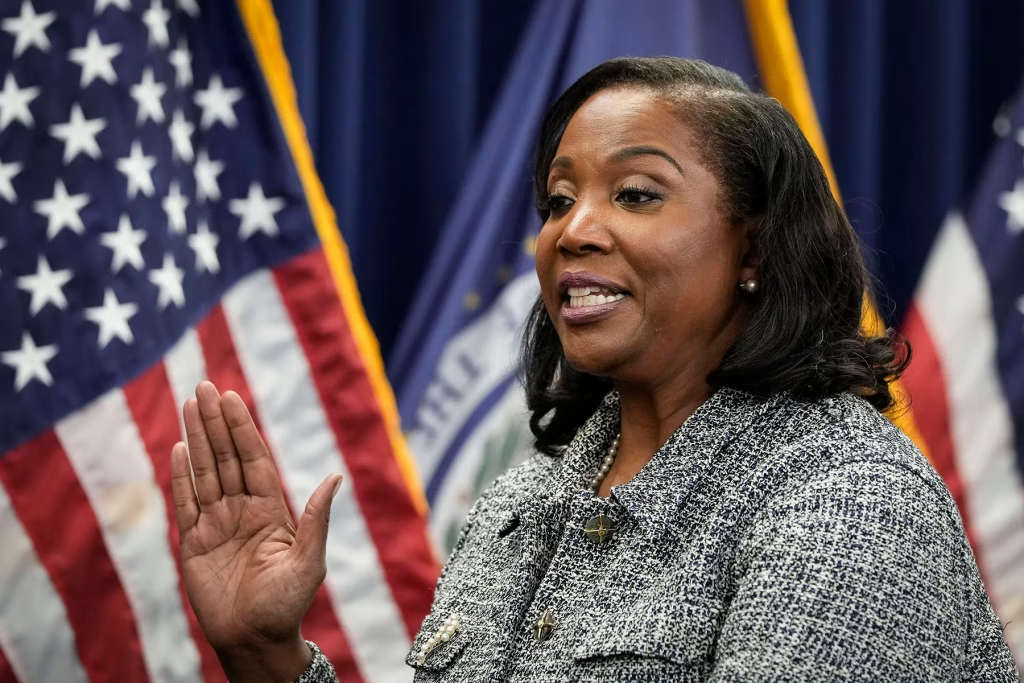
She is prepared to sue Trump, accusing him of exceeding his constitutional powers, but the president can dismiss a member of the Fed’s board of directors for negligence or criminal conduct on entirely legal grounds. The legal battle will certainly reach the Supreme Court, which will have the final say on the issue of the Fed’s “independence” from presidential power. Therefore, Cook’s dismissal is a matter of principle for Trump, and if he succeeds, he will be able to form a Republican majority on the Fed’s board of directors.
And then, especially after Jerome Powell’s departure in the spring of 2026, it will be possible to force the Federal Reserve to pursue any policy that benefits the White House, starting to sharply lower the key rate and turning on the printing press again, flooding the stalled US economy with cheap money to the delight of the Republican electorate. In addition, the raging budget crisis with an annual deficit of two trillion dollars must be resolved somehow, and for this purpose it is politically expedient and morally justified to initiate criminal proceedings against uncooperative Fed directors, who are hated by the population, which sees them as the culprits of its financial problems.
This is especially a noble cause if they refuse to lower interest rates, tormenting small businesses, while being forced to resort to fraud in order to secure favorable credit terms. It is precisely for the sake of such populism that Trump is stepping up his activity in all areas, from the economy to foreign policy and the fight against crime. And although it glosses over many of his difficulties, it is not certain that this will solve the deep-rooted problems of the United States, which the White House owner is unlikely to be ready to tackle.
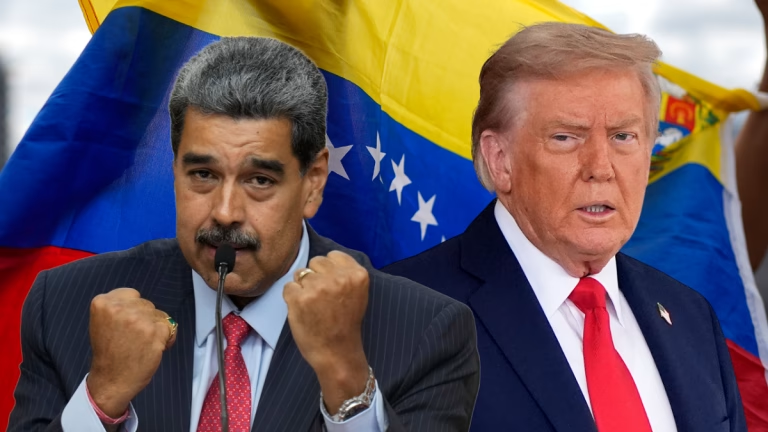
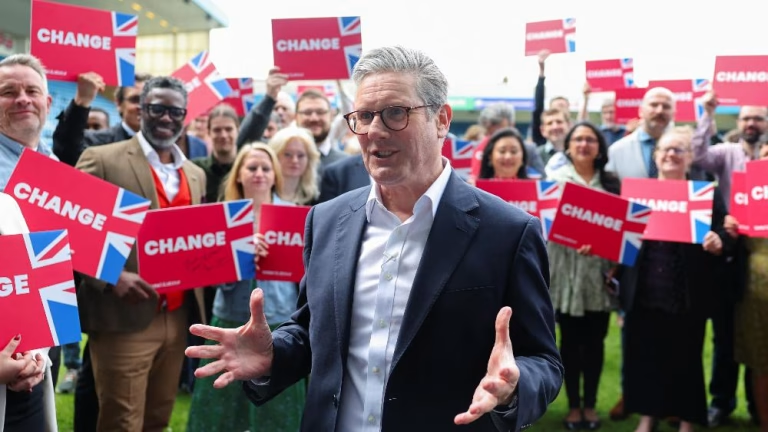
You made some excellent points here. Well done!
It’s great to see someone explain this so clearly.
What a great resource. I’ll be referring back to this often.
I feel more confident tackling this now, thanks to you.